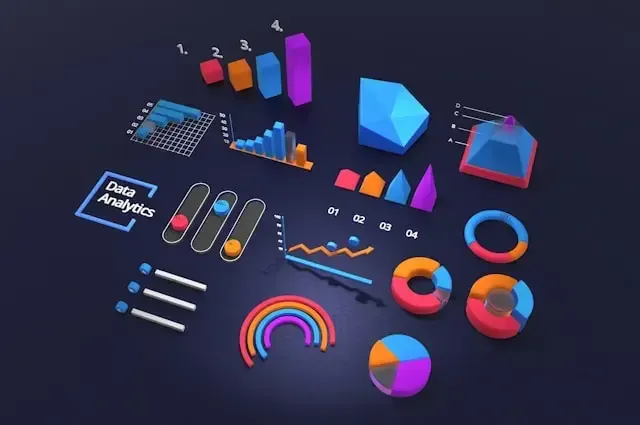In today's competitive job market, a well-constructed portfolio can be the key to standing out from other candidates. It serves as a personal showcase of your skills, experiences, and accomplishments. Whether you're a graphic designer, web developer, marketer, or any other professional, creating a portfolio can significantly boost your chances of impressing potential employers.
Introduction: The Importance of a Portfolio in Today’s Job Market
A portfolio is more than just a collection of your work. It’s a dynamic, evolving representation of your professional journey. While resumes and cover letters summarize your skills and experiences, portfolios allow you to show employers what you can do. They provide a tangible way for hiring managers to assess your abilities and potential beyond mere words on a page.
What is a Portfolio?
A portfolio is a curated compilation of your best work, showcasing your talents, experiences, and expertise in a visual and tangible format. It can include project samples, work experiences, testimonials, awards, and certifications. Essentially, it's your professional story told through examples of what you’ve accomplished.
Why Employers Value Portfolios
Employers are looking for proof that you can deliver on your promises. A portfolio provides them with direct evidence of your skills and the quality of your work. It’s one thing to say you’re a skilled designer or a capable project manager, but showing examples of your work gives employers confidence that you truly have the experience they’re seeking. Portfolios also demonstrate how you approach problems, your creativity, and your attention to detail.
Digital vs. Physical Portfolios
Today, portfolios come in two main forms: digital and physical. A digital portfolio, hosted on a website or platform like LinkedIn, offers the flexibility of sharing with anyone, anywhere. A physical portfolio, on the other hand, provides a tangible way to present your work during interviews or networking events. Both have their advantages and choosing between them (or using both) depends on your field and the kind of impression you want to make.
Identifying Your Skills and Strengths
Before diving into the specifics of portfolio building, it’s crucial to take a step back and reflect on what you have to offer. Understanding your strengths will help you showcase your best self to employers.
How to Determine Your Strengths
Start by conducting a thorough self-assessment. Ask yourself: What are your core competencies? What kind of projects have you worked on in the past? Which skills have you honed over time? Are you particularly good at certain tasks or have you excelled in specific roles? Knowing your strengths is key to developing a portfolio that showcases your true potential.
Key Skills Employers Look for in Portfolios
Employers typically look for a combination of technical skills and soft skills. Depending on your industry, technical skills could range from coding languages to design software expertise. However, don’t forget to highlight soft skills, such as communication, leadership, or teamwork, which are just as valuable. A well-rounded portfolio should reflect both your hard and soft skills.
Matching Your Strengths with Your Career Goals
Your portfolio should be aligned with your career aspirations. If you're aiming for a senior role, focus on leadership examples. For creative roles, highlight innovative projects. Every piece of work in your portfolio should tell a part of your professional story and connect directly with the type of job you're pursuing.
Choosing the Right Format: Digital vs. Physical Portfolio
The format of your portfolio can significantly influence how your work is perceived. Both digital and physical portfolios have unique advantages and are suited to different situations.
Benefits of a Digital Portfolio
Digital portfolios are highly versatile. They’re easy to share via a link, accessible 24/7, and can be updated in real-time. For professionals in creative and tech-based industries, having a sleek digital portfolio is essential. Digital formats allow for the inclusion of multimedia, such as video demonstrations, animations, or interactive elements, making them more engaging.
When a Physical Portfolio is More Effective
Physical portfolios can be especially impactful in one-on-one meetings, interviews, or at job fairs. The tactile experience of flipping through a well-organized portfolio can leave a memorable impression. For fields like art, architecture, or fashion, where texture, colors, and physical design matter, a physical portfolio is sometimes more appropriate than a digital one.
Hybrid Portfolios: Combining Both Formats
Many professionals opt for a hybrid approach—maintaining a digital portfolio for online sharing and a physical version for in-person meetings. A hybrid portfolio ensures that you're ready for any situation, allowing you to adapt to the preferences of different employers.
Essential Components of a Winning Portfolio
A successful portfolio contains specific elements that work together to tell your story. These components give employers a complete picture of your abilities and experiences.
Introduction or Personal Statement
Your portfolio should start with a short personal statement or introduction. This section introduces you and briefly outlines your background and career objectives. Keep it succinct but engaging, and make sure it reflects your brand.
Projects and Work Samples
The centerpiece of your portfolio is the work itself. Include samples of completed projects, assignments, or personal work that demonstrate your skills. Aim for quality over quantity—it's better to showcase a few excellent projects than overwhelm employers with too many examples.
Creating a Digital Portfolio: A Step-by-Step Guide
A digital portfolio is ideal for showcasing work in a flexible and accessible format. Here’s how to create a compelling digital portfolio.
Choosing the Right Platform
The platform you choose will depend on your profession and the type of work you’re displaying. For creatives, platforms like Behance or Dribble offer a user-friendly interface and a built-in audience of like-minded professionals. LinkedIn is suitable for more corporate roles, while a personal website offers complete customization and control.
Best Practices for Layout and Design
Keep the design clean and professional. A minimalist layout with clear navigation will ensure that employers can easily find what they’re looking for. Use high-quality images, avoid clutter, and ensure that your work takes center stage.
Ensuring Mobile and Desktop Compatibility
Make sure your digital portfolio is optimized for both desktop and mobile viewing. Many hiring managers browse portfolios on their phones, so ensure that your site looks polished and functions smoothly across all devices.
Incorporating Multimedia: Photos, Videos, and Interactive Elements
Take advantage of the digital format by incorporating multimedia elements. Videos, animated case studies, or interactive demos can make your portfolio more engaging and memorable. Just make sure that multimedia enhances your portfolio rather than distracting from your work.
Creating a Physical Portfolio: A Step-by-Step Guide
For those who prefer a hands-on approach, a physical portfolio can be just as impressive as a digital one.
Selecting a Portfolio Binder or Folder
Choose a professional-looking binder or folder that aligns with the tone of your work. A sleek, well-organized presentation folder can make your portfolio feel more tangible and polished.
Organizing Your Materials Effectively
Arrange your materials in a logical order, starting with your best work. Group projects by theme or chronologically to create a smooth flow. Use tabs or dividers to make navigation easier for the employer.
Balancing Aesthetics and Professionalism
While you want your portfolio to be visually appealing, don’t sacrifice professionalism for creativity. Stick to clean fonts and layouts, and ensure that the overall presentation reflects the industry you’re applying to.
Maintaining and Updating a Physical Portfolio
Like its digital counterpart, a physical portfolio needs to be updated regularly. Replace outdated materials with fresh, relevant work to keep your portfolio current. Your work samples are the core of your portfolio, so it’s important to present them effectively.
Selecting Your Best Work: Quality Over Quantity
Focus on showcasing your best and most relevant work. Select projects that align with the type of role you're applying for and demonstrate a range of skills. For each project, provide enough context to explain your role and the outcomes you achieved.
Structuring Project Details
For each sample, include a brief project description, the tools or skills you used, and the results. Be specific about the impact of your work—did it improve efficiency, increase sales, or solve a complex problem? Employers want to see tangible outcomes.
Telling a Story Through Your Portfolio
Each project should contribute to the narrative of your career journey. Structure your portfolio to show progression and growth in your skills over time. This storytelling approach can create a more engaging experience for employers.
Customizing for Different Industries or Roles
For instance, if you’re applying for a UX design role, highlight projects where you worked on user interfaces, usability testing, or design thinking. If it’s a project management position, focus on examples where you led teams or managed resources efficiently.
Highlighting Relevant Skills for Each Application
Tailor the skills you showcase to align with the job description. If the employer emphasizes teamwork and collaboration, emphasize projects where you work in teams. If the role requires technical expertise, make sure to highlight your proficiency with relevant tools and software.
The Impact of First Impressions
A cluttered or poorly organized portfolio can turn employers off before they’ve even had a chance to see your work. A well-structured, visually appealing layout invites employers to explore further, increasing your chances of making a lasting impression.
Designing a Clean, User-Friendly Portfolio
Stick to a simple, easy-to-navigate design. Use consistent fonts and spacing, and group related content together logically. Make sure that your portfolio reflects professionalism and attention to detail—qualities that employers will be looking for in their candidates.
Avoiding Common Design Mistakes
Overloading pages with too much text, using inconsistent fonts, or creating a confusing navigation structure are common mistakes to avoid. Keep the design cohesive and let your work speak for itself.
Writing a Personal Statement That Stands Out
Your statement is one of the most critical parts of your portfolio.
The Role of the Personal Statement in Your Portfolio
This section introduces you to employers and provides a glimpse into your personality and career goals. It’s the first chance you have to make a connection, so make it count.
Tips for Writing a Compelling Introduction
Keep it short, direct, and engaging. Highlight your unique strengths and what motivates you in your field. Be sure to align your statement with the type of job you’re applying for and reflect your brand.
Aligning Your Statement with Your Brand
Your brand is the professional image you project to the world. Make sure your statement reflects this image—whether that’s creative, analytical, or leadership-focused.
Where to Place Recommendations in Your Portfolio
Place testimonials next to related projects for context, or create a dedicated section for feedback and recommendations. This allows potential employers to see how your work has been perceived by others in your field.
Collecting and Curating Reviews
Reach out to past clients or colleagues for testimonials that highlight specific skills or achievements. Be sure to curate these reviews, focusing on the ones that best align with your career goals.
Regular Updates and Maintenance
Your portfolio is not a static document—it should evolve as your career progresses.
The Importance of Keeping Your Portfolio Fresh
A portfolio that includes outdated projects can give the impression that you haven’t accomplished anything new. Regularly updating your portfolio with recent work ensures that it accurately reflects your current skills and experiences.
How to Incorporate New Skills and Experiences
Whenever you complete a new project or acquire new skills, update your portfolio. Add fresh content that aligns with the job you’re seeking and remove older work that no longer represents your best efforts.
Avoiding Outdated Content
Keep your portfolio concise by removing work that’s no longer relevant. Employers don’t need to see every project you’ve ever worked on—just the ones that best showcase your skills and experience.
Promoting Your Portfolio to Potential Employers
Creating a portfolio is only half the battle. You also need to ensure it gets in front of the right people.
Integrating Your Portfolio into Your Resume
Include a link to your digital portfolio on your resume and cover letter. This allows employers to easily access your work samples while reviewing your application materials. A disorganized portfolio can frustrate employers and detract from the quality of your work. Keep your layout clean and make sure that it’s easy to navigate.
Conclusion
Building a portfolio that impresses employers is an ongoing process. It requires reflection, organization, and creativity. The key to success lies in selecting your best work, tailoring your portfolio to each job application, and continuously updating it as your career progresses. Whether digital or physical, a well-crafted portfolio can set you apart from the competition and help you land your dream job.


























